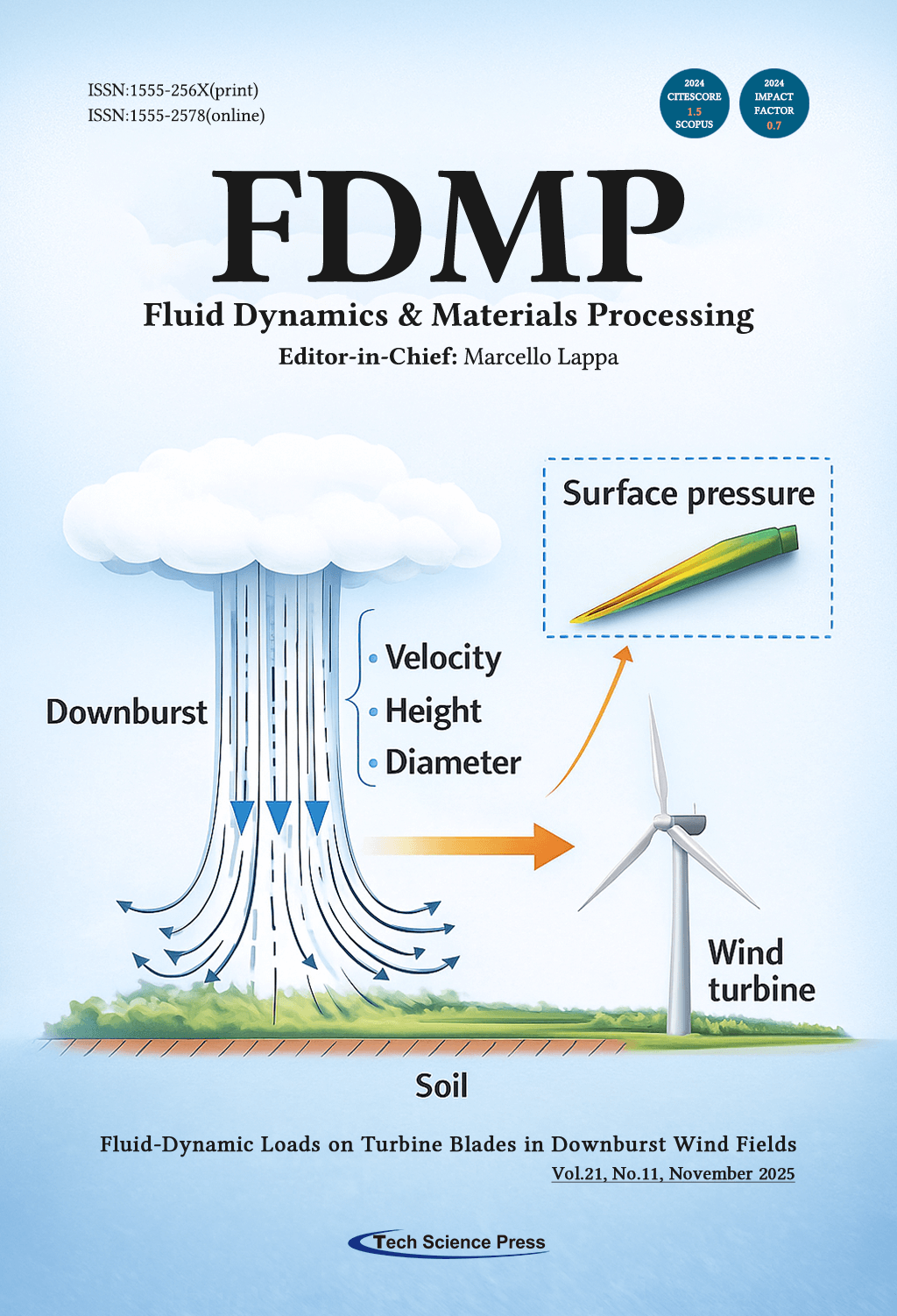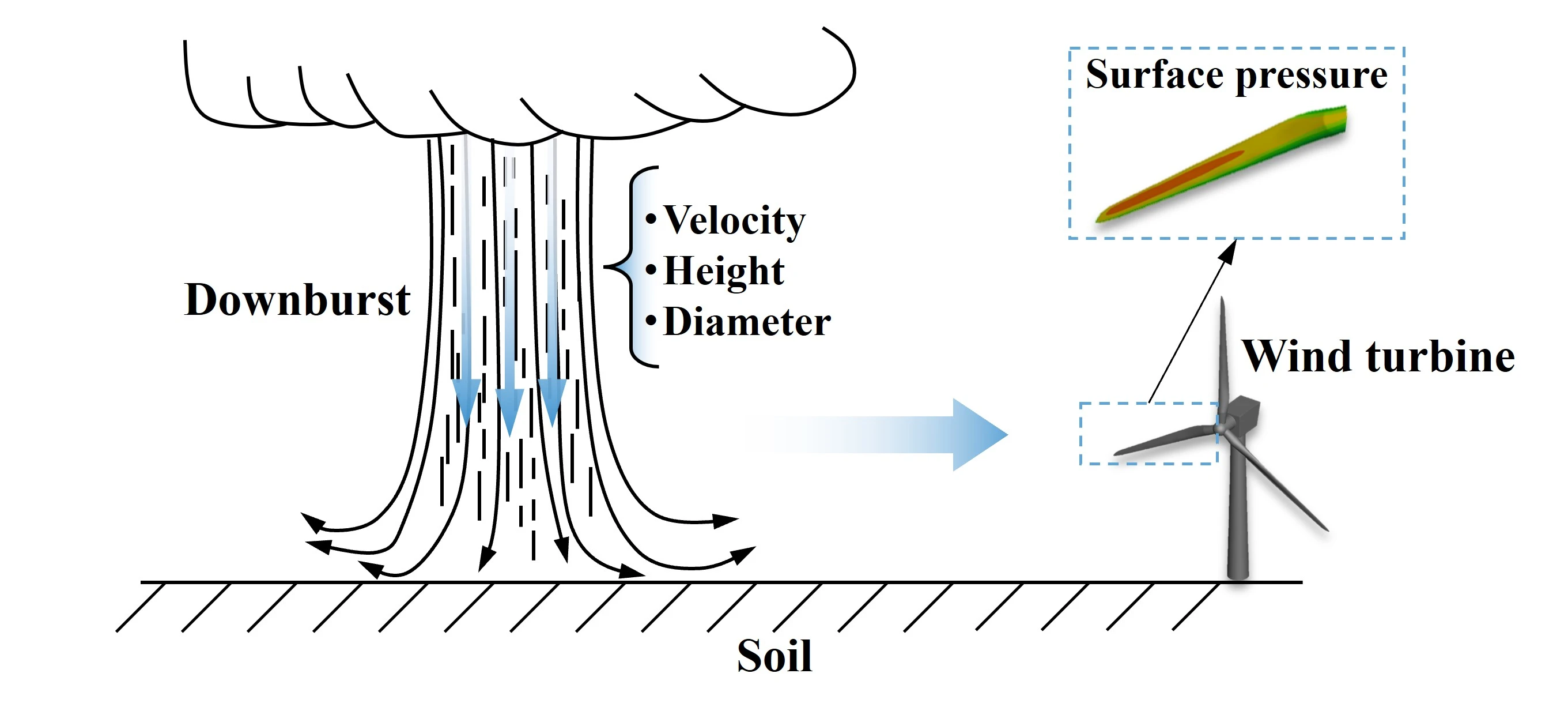
Fluid Dynamics and Materials Processing is an essential reading for all those concerned with complex fluids, multiphase flows and the intersection of fluid dynamics with materials processing and/or with the more general field of engineering optimization. It features original theoretical, computational, and experimental investigations. All subjects where a material, at a certain stage of its “life”, is in a fluid state, behaves as a fluid (e.g. many types of granular media) or interacts with a fluid should be considered relevant to FDMP. Relevant examples include (but are not limited to) the most modern and advanced processes for the production of inorganic (semiconductors, metal alloys, foams, plastics, polymers, ceramic materials, cement, asphalt and resins of various kinds), organic (protein crystals, drugs and medicines) materials and "living" (in vitro) biological tissues. We are especially interested in those studies where emphasis is put on the fluid-dynamic conditions under which a material is operated. However, FDMP also welcomes manuscripts dealing with more fundamental aspects such as the rheological behavior of multiphase systems or the convective currents that are produced in a fluid as a result of the thermal, chemical and/or mechanical stimuli typically applied in various processing or manufacturing methods (e.g. thermal gradients, shaking, mixing, etc). Some attention is devoted as well to all those problems of “structure/fluid” interaction that have extensive background applications in important fields such as marine, chemical, aeronautical and aerospace engineering and the oil sector, i.e. all those cases where fluid-dynamic analysis is instrumental in guiding the design/optimization of the considered systems (or related components) and the selection of the required “materials”.
Emerging Source Citation Index (Web of Science): 0.7; Scopus Citescore (Impact per Publication 2024): 1.5; SNIP (Source Normalized Impact per Paper 2024): 0.350; Engineering Index (Compendex); EBSCO; Google Scholar; Proquest; Portico, etc...
 Open Access
Open Access
ARTICLE
FDMP-Fluid Dynamics & Materials Processing, Vol.21, No.11, pp. 2651-2671, 2025, DOI:10.32604/fdmp.2025.070122 - 01 December 2025
(This article belongs to the Special Issue: Fluid Mechanics & Thermodynamics in Renewable Energy and HVAC Systems)
Abstract A downburst is a strong downdraft generated by intense thunderstorm clouds, producing radially divergent and highly destructive winds near the ground. Its characteristic scales are expressed through random variations in jet height, velocity, and diameter during an event. In this study, a reduced-scale parked wind turbine is exposed to downburst wind fields to investigate the resulting extreme wind loads. The analysis emphasizes both the flow structure of downbursts and the variations of surface wind pressure on turbine blades under different jet parameters. Results show that increasing jet velocity markedly enhances the maximum horizontal wind speed,… More >
Graphic Abstract

 Open Access
Open Access
ARTICLE
FDMP-Fluid Dynamics & Materials Processing, Vol.21, No.11, pp. 2673-2700, 2025, DOI:10.32604/fdmp.2025.069719 - 01 December 2025
Abstract In recent years, tuned liquid dampers (TLDs) have attracted significant research interest; however, overall progress has been limited due to insufficient understanding of the mechanisms governing sloshing-induced loads. In particular, it remains unclear whether the water in aqueducts—common water-diversion structures in many countries—can serve as an effective TLD. This study investigates the generation mechanisms of sloshing loads during the first-order transverse resonance of water in a U-shaped aqueduct using a two-dimensional (2D) numerical model. The results reveal that, at the equilibrium position, the free surface difference between the left and right walls, the horizontal force… More >
 Open Access
Open Access
ARTICLE
FDMP-Fluid Dynamics & Materials Processing, Vol.21, No.11, pp. 2701-2719, 2025, DOI:10.32604/fdmp.2025.067298 - 01 December 2025
(This article belongs to the Special Issue: Multiphase Fluid Flow Behaviors in Oil, Gas, Water, and Solid Systems during CCUS Processes in Hydrocarbon Reservoirs)
Abstract Tight gas reservoirs are often characterized by pronounced heterogeneity and poor continuity, resulting in wide variability in production enhancement and net present value (NPV) for different geological parameter combinations (see e.g., the Ordos Basin). The conditions governing geological adaptability remain insufficiently defined. To address these challenges, this study integrates large-volume hydraulic fracturing, numerical production simulation, and economic evaluation to elucidate the mechanisms by which large-scale fracturing enhances fracture parameters in tight gas formations. The analysis reveals that, for identical proppant and fluid volumes, increasing the fracturing injection rate leads to longer and taller fractures. Over… More >
 Open Access
Open Access
ARTICLE
FDMP-Fluid Dynamics & Materials Processing, Vol.21, No.11, pp. 2721-2740, 2025, DOI:10.32604/fdmp.2025.068889 - 01 December 2025
Abstract To enhance the navigation efficiency of inland new-energy ships and reduce energy consumption and emissions, this study investigates wind load coefficients under 13 conditions, combining a wind speed of 2.0 m/s with wind direction angles ranging from 0° to 180° in 15° increments. Using Computational Fluid Dynamics (CFD) simulations, the wind load is decomposed into along-course (CX) and transverse (CY) components, and their variation with wind direction is systematically analyzed. Results show that CX is maximal under headwind (0°), decreases approximately following a cosine trend, and reaches its most negative value under tailwind (180°). CY peaks at More >
 Open Access
Open Access
ARTICLE
FDMP-Fluid Dynamics & Materials Processing, Vol.21, No.11, pp. 2741-2760, 2025, DOI:10.32604/fdmp.2025.070395 - 01 December 2025
Abstract The rapid prediction of seepage mass flow in soil is essential for understanding fluid transport in porous media. This study proposes a new method for fast prediction of soil seepage mass flow by combining mesoscopic modeling with deep learning. Porous media structures were generated using the Quartet Structure Generation Set (QSGS) method, and a mesoscopic-scale seepage calculation model was applied to compute flow rates. These results were then used to train a deep learning model for rapid prediction. The analysis shows that larger average pore diameters lead to higher internal flow velocities and mass flow More >
 Open Access
Open Access
ARTICLE
FDMP-Fluid Dynamics & Materials Processing, Vol.21, No.11, pp. 2761-2777, 2025, DOI:10.32604/fdmp.2025.072236 - 01 December 2025
Abstract High-pressure water jet technology has emerged as a highly effective method for removing industrial-scale deposits from pipelines, offering a clean, efficient, and environmentally sustainable alternative to conventional mechanical or chemical cleaning techniques. Among the many parameters influencing its performance, the geometry of the nozzle plays a decisive role in governing jet coherence, impact pressure distribution, and overall cleaning efficiency. In this study, a comprehensive numerical and experimental investigation is conducted to elucidate the influence of nozzle geometry on the behavior of high-pressure water jets. Using Computational Fluid Dynamics (CFD) simulations based on the Volume of… More >
 Open Access
Open Access
ARTICLE
FDMP-Fluid Dynamics & Materials Processing, Vol.21, No.11, pp. 2779-2793, 2025, DOI:10.32604/fdmp.2025.072671 - 01 December 2025
Abstract Traditional cement-based slurries are often constrained by excessive cement consumption, prolonged setting times, and limited controllability, which hinder their broader engineering applications. To overcome these challenges, this study focuses on optimizing ordinary cement-based slurry through the incorporation of targeted additives and rational adjustment of mix proportions, with the aim of developing a rapid-setting, early-strength cementitious system. In particular, a series of comparative and orthogonal experiments were conducted to systematically examine the evolution of the slurry’s macroscopic properties. In addition, the response surface methodology (RSM) was introduced to reveal the interaction mechanisms among key parameters, thereby… More >
 Open Access
Open Access
ARTICLE
FDMP-Fluid Dynamics & Materials Processing, Vol.21, No.11, pp. 2795-2814, 2025, DOI:10.32604/fdmp.2025.072708 - 01 December 2025
Abstract High-speed trains operating in freezing rain are highly susceptible to severe ice accretion in the pantograph region, which compromises both power transmission efficiency and dynamic performance. To elucidate the underlying mechanisms of this phenomenon, an Euler–Euler multiphase flow model was employed to simulate droplet impingement and collection on the pantograph surface, while a glaze-ice formation model incorporating wall film dynamics was used to capture the subsequent growth of ice. The effects of key parameters—including liquid water content, ambient temperature, train velocity, and droplet diameter—on the amount and morphology of ice were systematically investigated. The results More >
 Open Access
Open Access
ARTICLE
FDMP-Fluid Dynamics & Materials Processing, Vol.21, No.11, pp. 2815-2828, 2025, DOI:10.32604/fdmp.2025.073775 - 01 December 2025
(This article belongs to the Special Issue: Subsurface Fluid Flow Dynamics and Applications in Carbon Reduction Technologies)
Abstract This study explores the impact of salinity on fluid replacement during imbibition-driven oil recovery through a series of core self-imbibition experiments. By integrating key parameters such as interfacial tension, contact angle, and oil displacement efficiency, we systematically examine how variations in salinity level, ion type, and ion concentration affect the imbibition process. The results demonstrate that the salinity of the injected fluid exerts a strong influence on the rate and extent of oil recovery. Compared with high-salinity conditions, low-salinity injection, particularly below 5000 mg·L−1, induces pronounced fluctuations in the replacement rate, achieving the highest recovery at More >
 Open Access
Open Access
ARTICLE
FDMP-Fluid Dynamics & Materials Processing, Vol.21, No.11, pp. 2829-2853, 2025, DOI:10.32604/fdmp.2025.072492 - 01 December 2025
(This article belongs to the Special Issue: Advances in Computational Nano-Fluids)
Abstract Understanding the complex interaction between heat and mass transfer in non-Newtonian microflows is essential for the development and optimization of efficient microfluidic and thermal management systems. This study investigates the magnetohydrodynamic (MHD) thermosolutal convection of a Casson fluid within an inclined, porous microchannel subjected to convective boundary conditions. The nonlinear, coupled equations governing momentum, energy, and species transport are solved numerically using the MATLAB bvp4c solver, ensuring high numerical accuracy and stability. To identify the dominant parameters influencing flow behavior and to optimize transport performance, a comprehensive hybrid optimization framework—combining a modified Taguchi design, Grey… More >